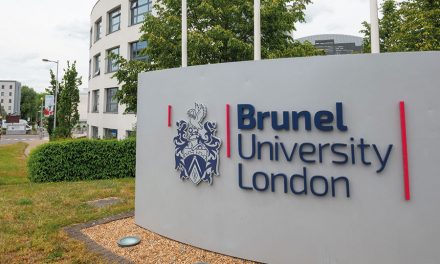Summer and sunshine appeared to be in short supply this year although with vaccinations, boosters and, restrictions lifted, there is a lot to be positive about. The University has just started in its new academic year, welcoming back national and international students to begin or resume their studies. This year, it is not only the freshers who are experiencing our campus for the first time, but 2nd year students who spent much of last year learning remotely. So, we have a vibrant buzz of fresh faces, all keen to see what living and working at Brunel has to offer and embark on this next phase of their education.
Our commitment to education spans all higher education levels from undergraduate through to PhD Doctoral Researchers, of whom many spend time working with academics and researchers associated with CHRC, to generate and share knowledge on CHRCs projects. We have since expanded this to include working with local Schools to showcase CHRCs research and to develop learning content with the aim of embedding this into the secondary school children’s curriculum. In this Edition of Exposure, the article titled ‘CHRC and secondary schools’ education’, describes the successful pilot of our latest collaboration with the NCCF and Brunel STEM Centre; titled STEM Bioradiation module: ‘Military Veterans for nuclear testing programmes’. The pilot programme worked with 14-16-year-old pupils over a period of 6 weeks and provided opportunities for them to learn about the historical aspects and personal stories of the nuclear testing programme, the potential adverse effects of radiation and, to get a flavour of CHRCs current research. As the article describes, the pilot was a huge success with both the School and the pupils engaged in the project and in their development of valuable knowledge and skills. Our team aims to build on this pilot and deliver the programme to more schools over the coming year and years to come.
In this edition of Exposure, we continue our series of lay summaries which aim to present published scientific research in an accessible format for the non-scientist. The paper summarised is by Yeager and co-authors which was published in the peer-reviewed scientific Journal Science in 2021. The paper describes a major research study carried out by an international team of researchers who examined the DNA of families whose parents were exposed to radiation, as a consequence of the Chernobyl disaster. Their aim was to examine if this exposure resulted in mutations that were detectable in the children’s DNA. As outlined on our project pages Genetic and Cytogenetic https://chrc4veterans.uk/research/genetic-cytogenetic/
this study of Chernobyl families is similar in design to part of the work being undertaken at CHRC. You can see more details of all our projects, their progress and how they relate to each other by reading our 3rd Annual Report
https://chrc4veterans.uk/wp-content/uploads/2020/12/CHRC-3rd-Annual-Report.pdf
We also include, in this Edition, a short report by Amy Prescott (doctoral researcher, CHRC) who attended this year’s BNTVA reunion event in Telford. Amy was delighted to see many of those she has worked with through her studies and share part of her work. We look forward to sharing more contributions of CHRCs research upon completion of studies and subsequent peer-review for publication.
I would like to finish by highlighting our ‘Basic Information’ series which are available as either flip-books or interactive versions. Both are available through our Knowledge Hub page https://chrc4veterans.uk/knowledge-hub/
on our website
www.chrc4veterans.uk and also available to order as hard copies. Thank you again to all our volunteers who have contributed to all of our projects. CHRC staff are contactable via email at: chrc@brunel.ac.uk
Dr Rhona Anderson, Director, CHRC





